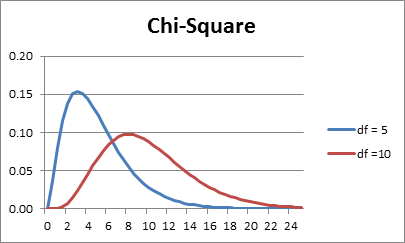

The expected counts use the row and column totals. When using software, these calculated values will be labeled as “expected values,” “expected cell counts” or some similar term.Īll of the expected counts for our data are larger than five, so we meet the requirement for applying the independence test.īefore calculating the test statistic, let’s look at the contingency table again. (We still need to check that more than five values are expected for each combination.) It appears we have indeed selected a valid method. For now, we assume we meet this requirement and will check it later.
#Chi square jmp movie
To confirm this, we need to know the total counts for each type of movie and the total counts for whether snacks were bought or not. The last requirement is for more than five expected values for each combination of the two variables.Our variables are the movie type and whether or not snacks were purchased.We have a simple random sample of 600 people who saw a movie at our theater.Let’s start by answering: Is the Chi-square test of independence an appropriate method to evaluate the relationship between movie type and snack purchases? For each person, we know the type of movie they saw and whether or not they bought snacks. Suppose we collect data for 600 people at our theater. Let’s take a closer look at the movie snacks example. When we have fewer than five for any one combination, the test results are not reliable. For each combination of the levels of the two variables, we need at least five expected values.However, the counts for the combinations of the two categorical variables will be continuous. Don't use the independence test with continous variables that define the category combinations. Data values that are a simple random sample from the population of interest.If this is true, then the clinic can order food based only on the total number of dogs, without consideration for the breeds. Our idea is that the dog breed and types of food are unrelated. The second variable is whether owners feed dry food, canned food or a mixture. A veterinary clinic has a list of dog breeds they see as patients.If movie type and snack purchases are unrelated, estimating will be simpler than if the movie types impact snack sales. The owner of the movie theater wants to estimate how many snacks to buy. Our idea (or, in statistical terms, our null hypothesis) is that the type of movie and whether or not people bought snacks are unrelated. Our second variable is whether or not the patrons of those genres bought snacks at the theater. We have a list of movie genres this is our first variable.Our idea is that the variables are not related. For the Chi-square test of independence, we need two variables.


 0 kommentar(er)
0 kommentar(er)
